In today’s fast-paced logistics and supply chain environment, real-time performance tracking is essential. Warehouses are…
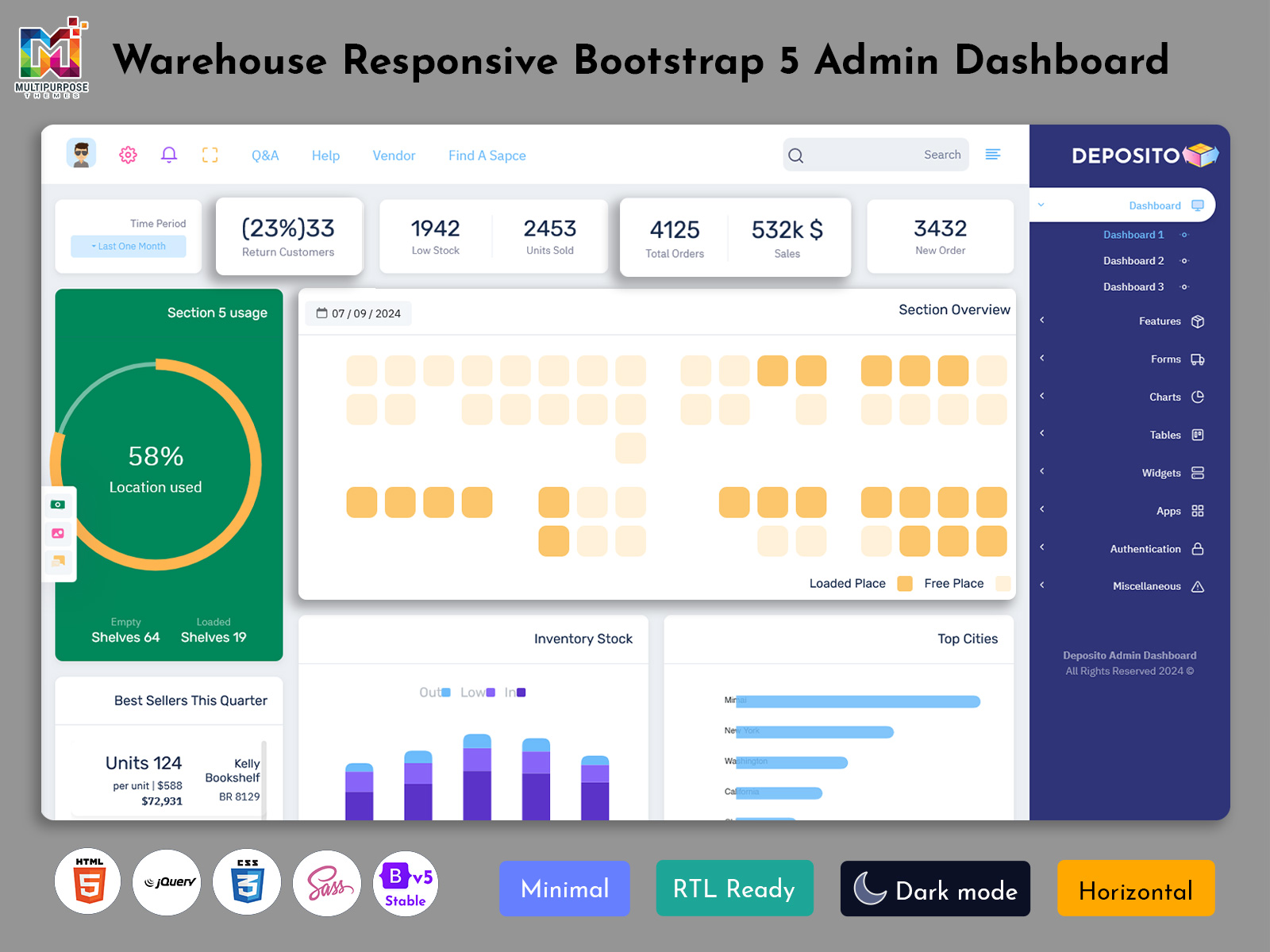
How a Warehouse KPI Dashboard Can Improve Safety and Compliance
Reading Time: 7 minutes
Introduction: Warehouse KPI Dashboard
A Warehouse KPI Dashboard is an essential tool that provides real-time, actionable insights into warehouse operations. This dashboard consolidates various metrics into a single interface, allowing warehouse managers and staff to track performance, optimize operations, and make data-driven decisions. In environments where safety is paramount, the Warehouse KPI Dashboard helps identify potential hazards and ensures compliance with industry regulations, particularly in managing key safety-related aspects such as accident rates, worker health, and compliance with OSHA (Occupational Safety and Health Administration) standards.
Benefits of a Warehouse KPI Dashboard
Warehouse operations are complex, and ensuring safety while maintaining efficiency can be challenging. A Warehouse KPI Dashboard serves as an all-in-one tool to monitor, measure, and track safety performance in real-time. By using such a dashboard, managers can gain visibility into key safety metrics, such as accident frequency, worker health statistics, and adherence to safety protocols. This real-time tracking helps prevent accidents, improves regulatory compliance, and fosters a culture of safety within the warehouse. Additionally, monitoring these KPIs ensures that warehouses can reduce operational risks, minimize downtime, and enhance the overall productivity of the workforce.
Dashboards of Warehouse Admin
Dashboard – 1
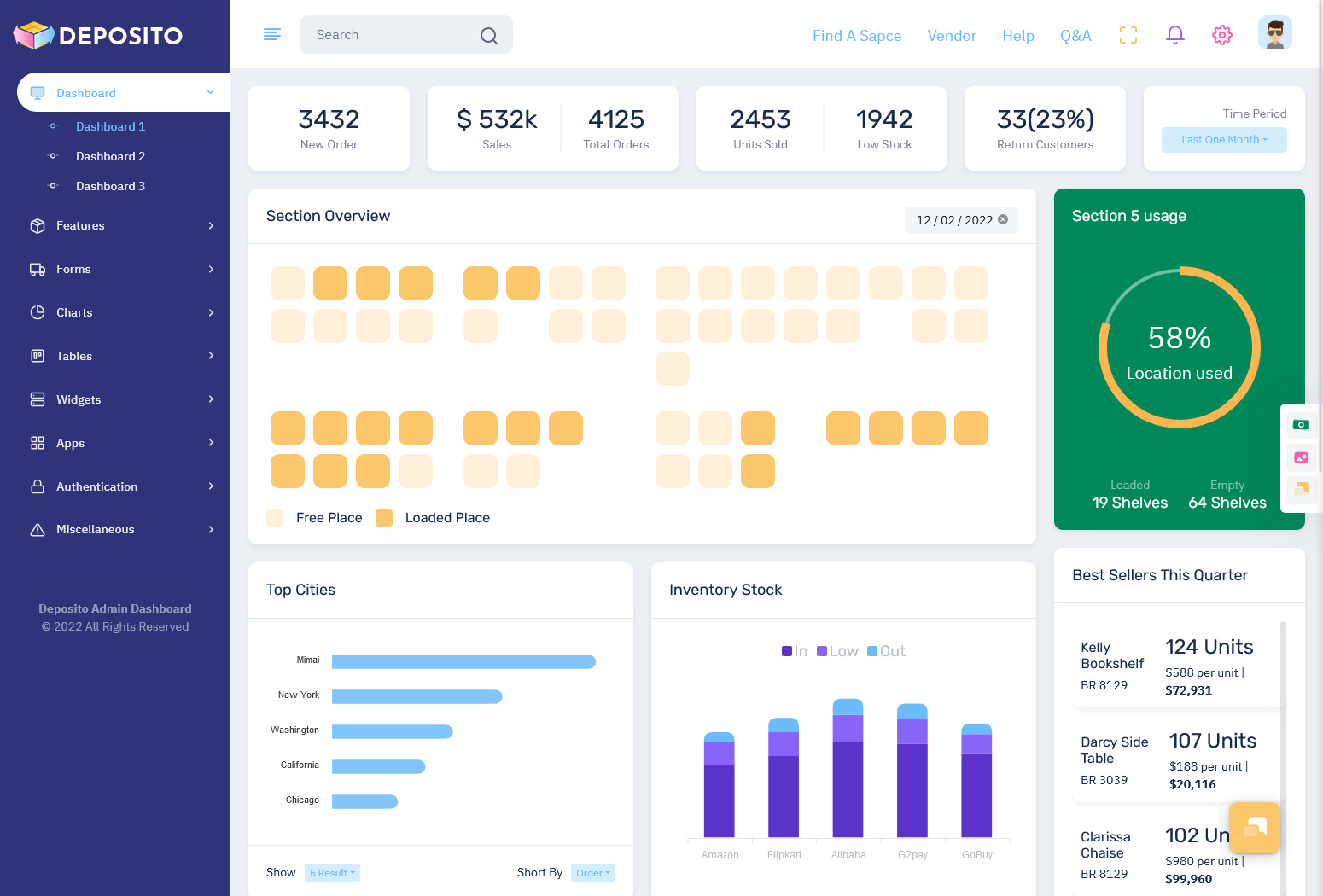
MORE INFO / BUY NOW DEMO
Dashboard – 2
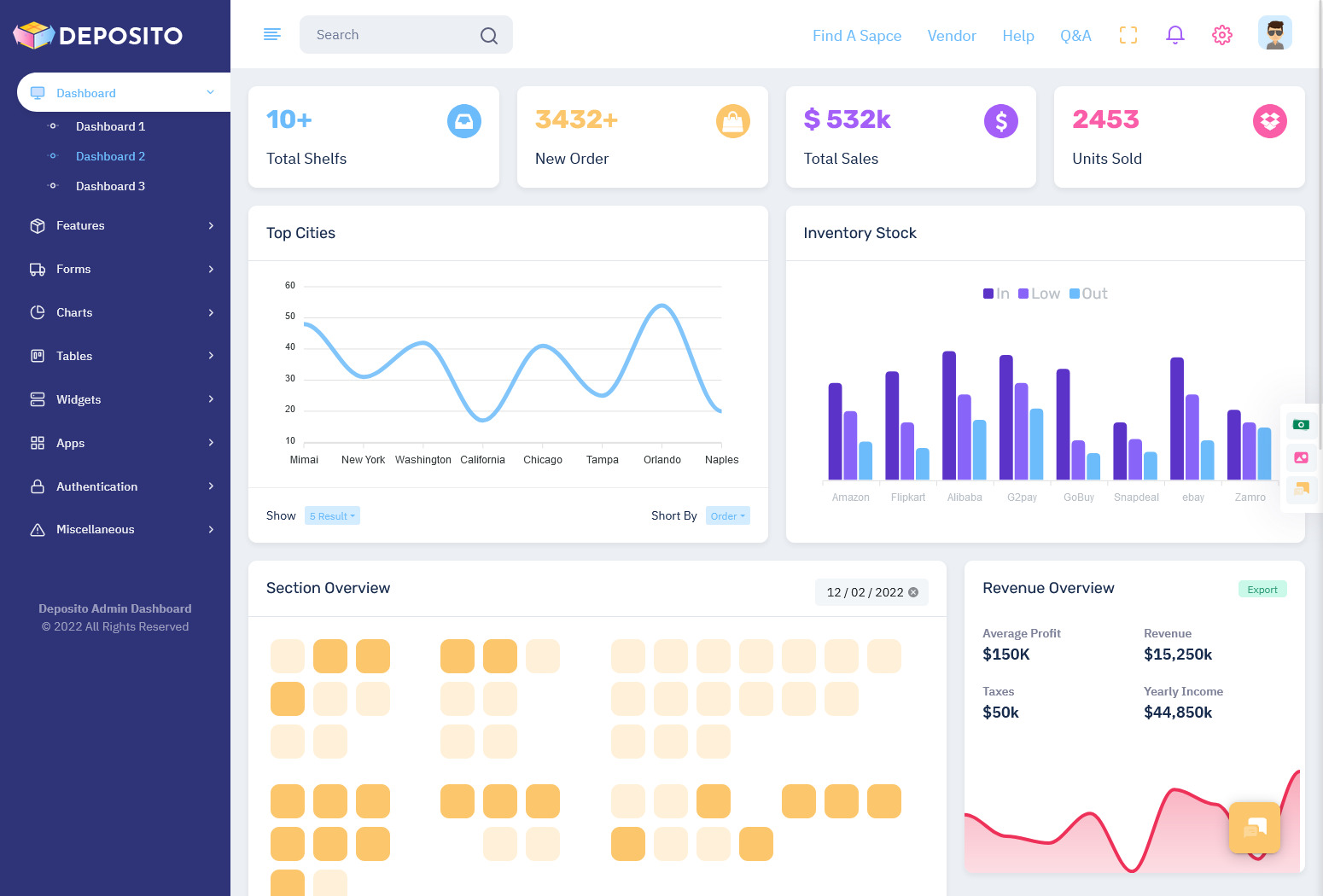
MORE INFO / BUY NOW DEMO
Dashboard – 3
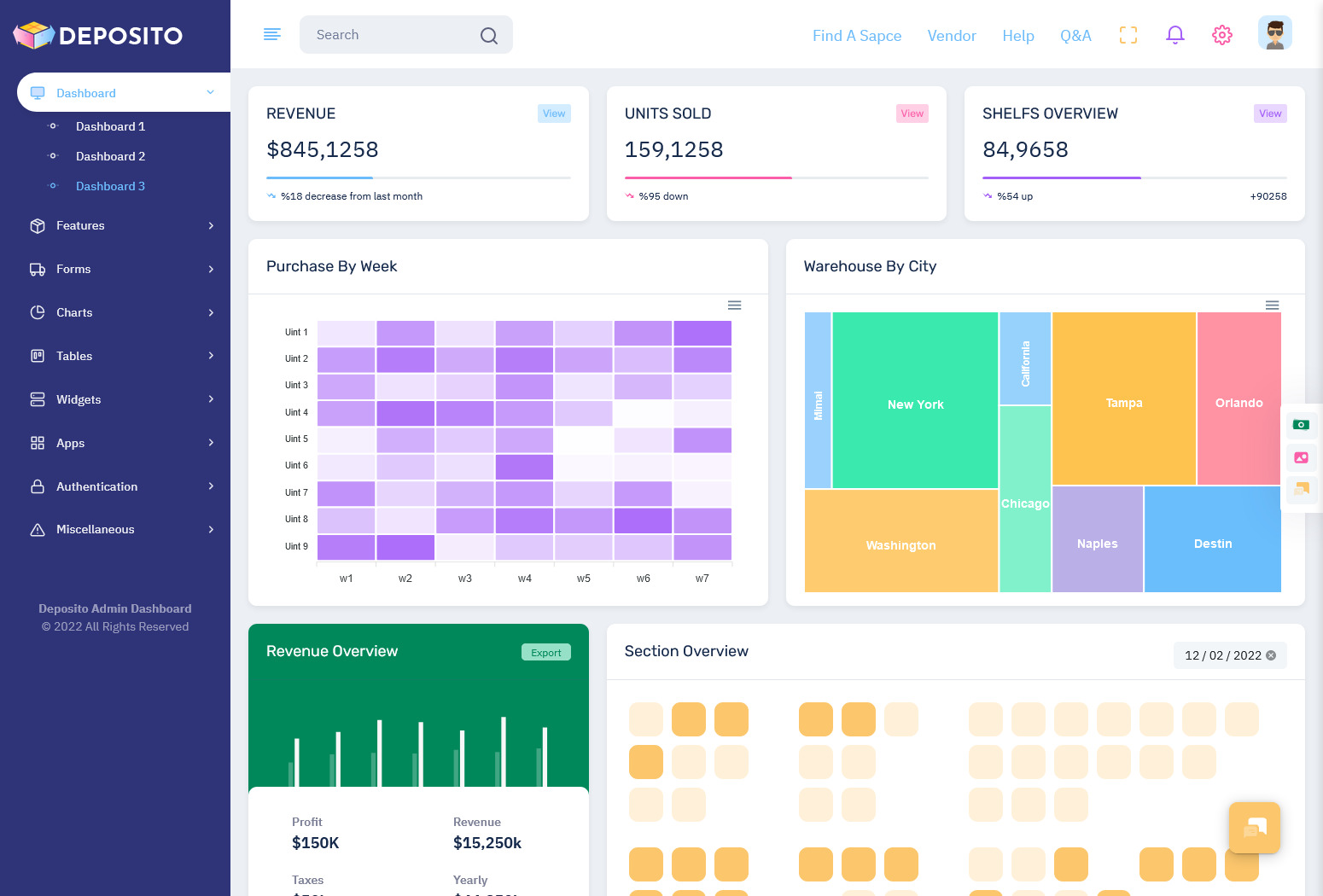
MORE INFO / BUY NOW DEMO
Content Outline
1. The Importance of Safety in Warehouse Environments
In a warehouse setting, safety is a critical component of day-to-day operations. With employees handling heavy machinery, lifting products, and operating under potentially hazardous conditions, the risk of accidents is higher than in many other industries. The importance of safety extends beyond protecting employees from physical harm; it also plays a significant role in improving operational efficiency, ensuring business continuity, and avoiding legal and financial consequences related to workplace accidents.
Warehouse managers have a responsibility to create an environment where safety is always a top priority. This is where a Warehouse Dashboard can make a tangible difference. By continuously monitoring key safety metrics, managers can identify issues early on and address them before they result in accidents or compliance violations. Additionally, a Warehouse KPI Dashboard helps create a proactive safety culture by keeping safety at the forefront of day-to-day operations, empowering employees to stay vigilant and adhere to safety protocols.
Pages of Warehouse Admin
Home Page
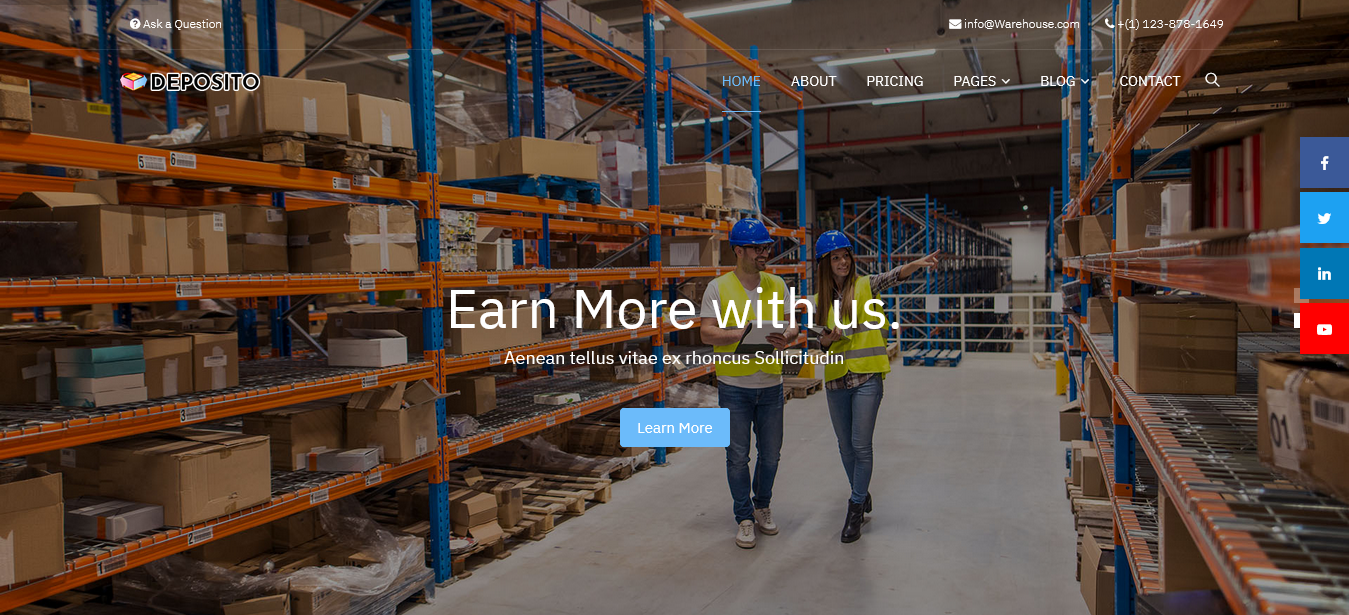
MORE INFO / BUY NOW DEMO
About Us Page
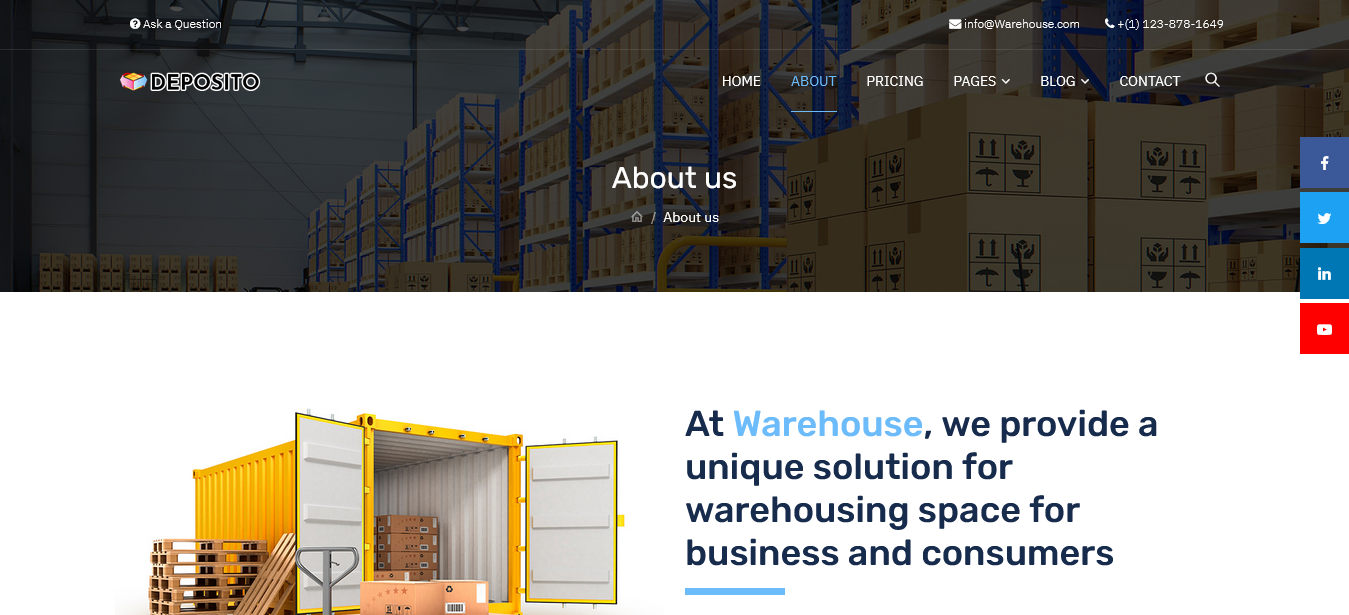
MORE INFO / BUY NOW DEMO
Pricing Page
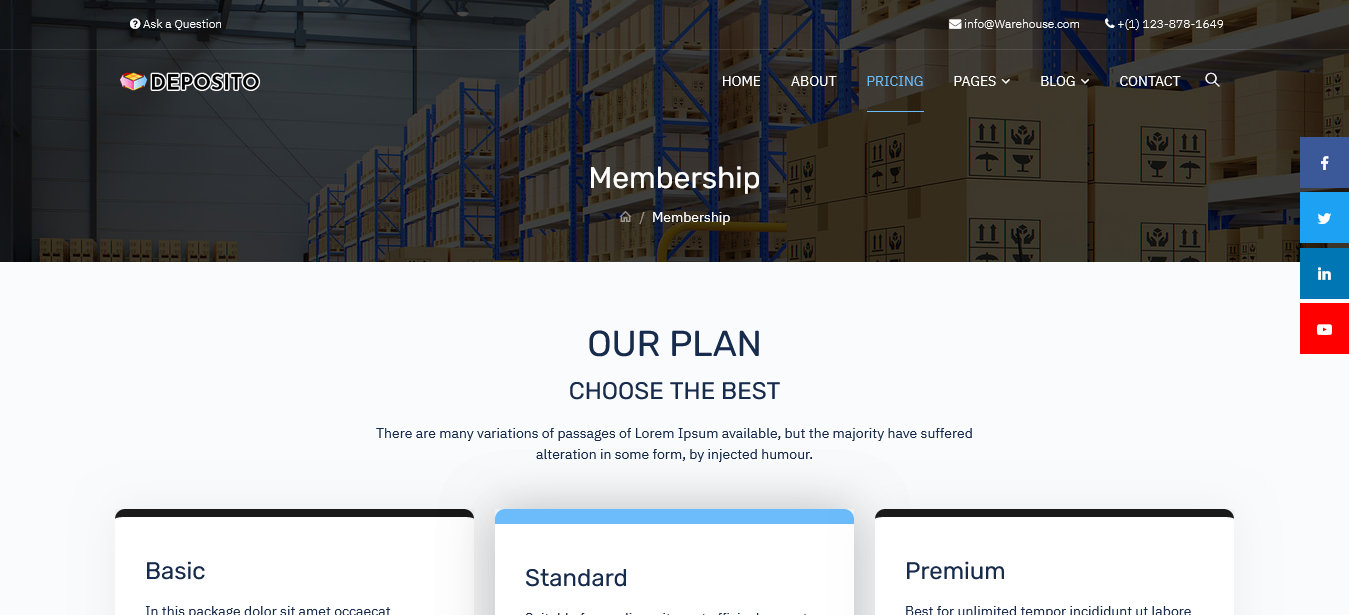
MORE INFO / BUY NOW DEMO
Contact US Page
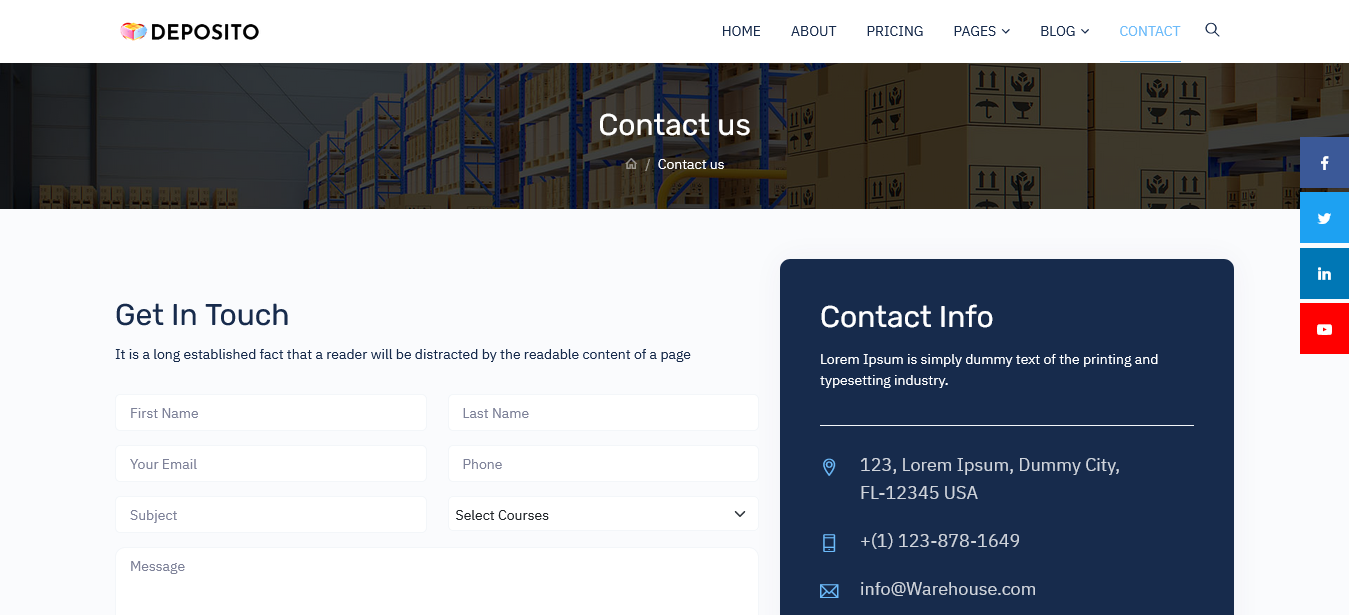
MORE INFO / BUY NOW DEMO
2. Key Safety-Related KPIs to Track Using Dashboards
Key safety-related KPIs are crucial for understanding how well a warehouse is managing its operations from a safety perspective. By tracking the right KPIs, warehouse managers can pinpoint potential risks and take the necessary steps to mitigate them. Some of the most important safety-related KPIs that can be tracked through a Warehouse KPI Dashboard include:
– Accident and Injury Rate: This KPI measures the number of accidents or injuries that occur in the warehouse, providing insight into potential safety hazards. A high accident rate indicates that there may be systemic issues with warehouse processes or safety protocols.
– Compliance with OSHA Standards: Tracking adherence to OSHA regulations is crucial for avoiding penalties and maintaining a safe working environment. A Warehouse KPI Dashboard can track compliance in real-time, helping warehouse managers stay updated on potential violations and take corrective actions before non-compliance results in fines or safety incidents.
– Workplace Hazard Identification: This KPI focuses on identifying potential workplace hazards, whether they are related to machinery, materials handling, or environmental conditions. Dashboards can flag areas that need improvement, such as inadequate lighting or damaged equipment, enabling warehouse managers to take action quickly.
– Near Miss Reporting: This KPI tracks near-miss incidents that, while not resulting in an injury, highlight unsafe conditions that could lead to accidents. Reporting and tracking these incidents through a dashboard ensures that preventive measures are implemented before they escalate into actual accidents.
– Employee Health and Wellness: Tracking employee health through KPIs such as attendance, sickness rates, and the availability of health programs can help identify potential issues with workplace well-being. Dashboards can integrate this data and provide alerts if absenteeism rates increase, indicating a potential health-related issue within the warehouse.
3. How Dashboards Alert Managers to Safety Issues in Real-Time
Real-time alerts and notifications are one of the key features of a Warehouse KPI Dashboard, making it invaluable for safety management. These alerts are triggered by specific conditions or thresholds that managers define in advance. For example, if the accident rate exceeds a certain threshold, the dashboard can immediately notify warehouse managers so they can take swift action.
In addition to accident-related alerts, dashboards can also provide real-time data on safety inspections, employee health, and equipment maintenance schedules. For example, if a warehouse inspection is due, the dashboard can remind managers to perform it, ensuring that all safety checks are completed on time. By receiving these alerts, managers can promptly address issues, potentially preventing minor safety concerns from escalating into major incidents.
The Admin Dashboard UI enhances this capability by providing a centralized platform where all safety-related information is displayed in an intuitive format. With a well-organized Dashboard UI, managers can quickly assess the situation, prioritize actions, and keep the workforce safe.
4. Linking KPIs to OSHA Compliance and Safety Regulations
In the United States, OSHA sets the standard for workplace safety. Compliance with OSHA regulations is not only required by law but also crucial for maintaining a safe warehouse environment. A Warehouse KPI Dashboard is an excellent tool for ensuring continuous OSHA compliance.
By tracking KPIs like accident rates, hazard identification, and employee training, warehouse managers can directly link these metrics to OSHA guidelines. Dashboards can be customized to monitor specific OSHA standards, such as requirements for worker protection, handling hazardous materials, and maintaining appropriate safety equipment.
For instance, the Warehouse Metrics Dashboard can provide insights into whether the warehouse is meeting required safety training for employees. If a worker’s safety training has expired or is due for renewal, the dashboard can send automatic reminders, reducing the risk of non-compliance.
Additionally, dashboards can integrate with compliance tracking software, such as HRM Dashboard or Warehouse Manager Dashboard, allowing managers to view employee certifications, training records, and safety audits all in one place. This integration ensures that all employees are trained according to the latest safety standards and that any potential compliance gaps are addressed before they result in penalties.
5. Benefits of Monitoring Safety KPIs to Improve Workplace Culture and Reduce Risk
Monitoring safety KPIs through a Warehouse KPI Dashboard offers a multitude of benefits for both warehouse operations and the overall workplace culture. Here are some of the key advantages:
– Proactive Risk Management: Continuous monitoring of safety KPIs allows warehouse managers to identify potential risks before they escalate into accidents. Proactive management of safety hazards helps prevent injuries, reduces downtime, and minimizes insurance costs.
– Improved Workplace Culture: A warehouse that consistently tracks and acts on safety-related KPIs fosters a culture of safety and accountability. Employees will feel more secure knowing that their well-being is a top priority, and this can lead to improved morale, engagement, and retention.
– Increased Productivity: A safer work environment leads to fewer accidents, which in turn reduces the number of work stoppages and disruptions. This increased operational efficiency boosts overall productivity, ensuring that the warehouse runs smoothly and meets its performance goals.
– Reduced Legal and Financial Risk: Non-compliance with safety regulations can result in hefty fines and lawsuits. By tracking KPIs related to OSHA compliance, warehouse managers can ensure that their operations remain compliant, avoiding costly legal consequences.
6. Connecting the Warehouse KPI Dashboard with Other Dashboards
The Warehouse KPI Dashboard doesn’t operate in isolation; it can be connected with other dashboards to enhance its functionality and provide a more comprehensive view of warehouse operations. Here are a few ways in which it can be integrated with other types of dashboards:
– Inventory Management Dashboard: Combining the Warehouse KPI Dashboard with an Inventory Management Dashboard ensures that safety is considered alongside stock management. For instance, hazardous materials may need to be tracked alongside safety protocols to ensure that they are stored and handled properly.
– Workforce Management Dashboard: Integration with a Workforce Management Dashboard allows managers to track safety training, employee certifications, and health metrics, all in one place. This integration ensures that warehouse staff is not only operating efficiently but is also up-to-date on safety requirements.
– CRM Dashboard: If warehouse operations impact customer orders or deliveries, integrating with a CRM Dashboard helps manage customer expectations by providing real-time updates on warehouse performance and order accuracy.
– HRM Dashboard: Monitoring the safety of the workforce is closely tied to HR practices. By integrating the HRM Dashboard, managers can track employee wellness and compliance with safety-related protocols.
Why We Are Better
Our Warehouse KPI Dashboard stands out because of its real-time data integration, user-friendly interface, and comprehensive insights. It allows managers to track safety metrics and other warehouse operations in one centralized platform. Our dashboard integrates seamlessly with Bootstrap Admin Panel, Warehouse Dashboard, and other key tools like HRM Dashboard and LMS Dashboard, making it a highly versatile solution for any warehouse operation. The Master Dashboard UI ensures that you can access all safety and operational data quickly, while our customizable features make it adaptable to your specific needs.
Conclusion
Ensuring a safe and compliant warehouse environment is no longer a task that can be handled reactively. A Warehouse KPI Dashboard empowers managers to proactively track and manage safety metrics, ensuring that operations remain compliant and risk-free. By integrating safety KPIs into your warehouse management practices, you improve workplace culture, reduce legal and financial risks, and create a safer environment for your employees.
Make the smart choice today by investing in our Warehouse KPI Dashboard and experience the benefits of a safer, more efficient warehouse. Get in touch with us now to see how our solution can transform your operations.
Buy Now and Get Started Today!
Click below to purchase and start unlocking the full potential of your business!
 skip to Main Content
skip to Main Content




This Post Has 0 Comments